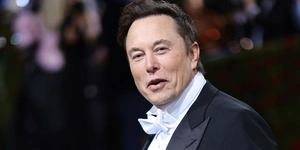Two years ago, during the last edition of the Formula 1 Indian Grand Prix, I quizzed then world champion Sebastian Vettel on Formula E, the electric car racing series that was launching around that time. Vettel was categorical: “I don’t like it at all. I think the people come here to feel Formula 1, and there’s not much to feel when a car goes by and you don’t hear anything else but the wind.”
For a category in which silence is a defining feature, electric vehicles are generating a lot of noise, thanks to cars such as the Tesla Model S and the Nissan Leaf. But two-wheelers are the ones quietly making huge strides in sales. In China, an estimated 35 million electric bicycles and scooters were sold last year. India, however, is struggling to sell even half a lakh. The majority of electric two-wheelers sold here are low speed—between 25 kmph and 40 kmph—and priced at the lower end. Either the whole bike or the components are sourced from China and put together here, with local brand badges slapped on.
Convinced that electric two-wheelers need a makeover in India, 26-year-old IIT Madras graduates Tarun Mehta and Swapnil Jain have got down to making one. Their startup, Ather Energy, is building a scooter, which they say will be a quantum jump for the segment. “Most of the improvements are in an order of magnitude. Speed is 3X (peaks at 70 kmph), power is 20X, battery charging is 8X faster, and battery life is 10X longer,” says Mehta. And it has looks to match. The battery pack is as easy to charge as a mobile and attains 80% of its capacity with an hour’s charge. The mileage offered on a single charge is still being tested.
Ather, which in Greek means the purest form of air the gods breathe, is planning to retail the scooter at a rarefied level of Rs 100,000. That’s a price not reached by scooters in India, where the Rs 80,000 Vespa is considered high end. The company will initially sell the vehicle through pre-orders from “experience centres” to be opened in select cities.
Earlier this year, Ather got a shot in the arm when the government announced the National Electric Mobility Mission Plan, which targets sales of 6 million to 7 million electric vehicles every year to promote fuel security. A remarkable feature of the policy is a subsidy ranging between Rs 1,800 and Rs 29,000 for two-wheelers. This is expected to accelerate consumer interest and get the electric plans of the big automotive companies going.
Such policy changes have also led to investor interest. Ather’s seed money came from 25 paid pre-orders but it has since snagged some powerful investors. Tiger Global invested $12 million and another $1 million came from other investors, including Flipkart founders Sachin and Binny Bansal.

MEHTA’S OFFICE IN a residential neighbourhood in Bengaluru’s Indiranagar is typically startup-ish. Having been incubated in IIT Madras, the team spent more than a year there designing and prototyping. “IIT Madras is an awesome place to cut down distractions,” says Mehta. They moved to Bengaluru as “it was difficult convincing people to move to Chennai and most of those we interviewed were already in Bengaluru.”
Ather wants to show that electric vehicles are not slow, kiddy things. “Smart, Internet-connected scooters are the next step in the evolution of vehicles. Technology is what we have. Even the side stand is being designed in-house,” says Mehta. The thesis that guides Ather, he says, is “if you build a no-compromise vehicle, people will buy it”. Practising this theory of building intellectual property rather than going for off-the-shelf components, Mehta is crafting the chassis, suspensions, lithium ion battery packs (the kind Tesla uses), battery management systems, bodywork, and the Android-based smart-vehicle software.
He says there is a mismatch between the customers that manufacturers are looking at and the actual people buying e-scooters. “Manufacturers are making vehicles for people who can’t buy entry-level petrol vehicles. But many of those buying e-scooters have a Honda City in their garage and they are disappointed with the scooters they are getting. Ather is a lifestyle choice. We are looking at people who understand the idea of a connected vehicle,” he explains.
This thinking extends to how Ather is planning production. It will build an assembly plant that will produce 20 to 30 vehicles a day, with 30 people putting a vehicle together in an hour. The plan is to produce a few thousand in year one, put them on the road, learn from the experience, and build a brand.
Chetan Maini, who founded the electric car company Reva Motors in 1994 before selling it off to Mahindra in 2010, believes Ather could be on to something. It wants to emulate Tesla, he says, by launching at the top end of the market in limited numbers. Those who are early to adopt new technology tend to love the geeky exclusivity it provides. “The likelihood of early adoption is higher when you offer high performance,” says Maini.
The comparison with Tesla’s strategy is pertinent. It launched with the high-performance Roadster, which cost $110,000 in the U.S., before moving down with the $70,000 Model S sedan. It was only after establishing the Palo Alto-based company as a force of change in the automobile industry that CEO Elon Musk announced that his company would build an affordable $35,000 car.
MEANWHILE, EXPERIMENTS with electric vehicles, such as Tesla’s and Ather’s, are making ripples in a faraway field, the Formula 1 racetrack. Over the past few years, Formula 1 has moved to quieter V6 engines than the screaming V8 that made music for fans at 18,000 rpm. Add the integration of the Kinetic Energy Recovery System, a.k.a. KERS, by which energy produced from braking is stored in batteries onboard, into which the driver can tap. Vettel may not like it but a quieter motor racing culture may be upon us soon.










Leave a Comment
Your email address will not be published. Required field are marked*